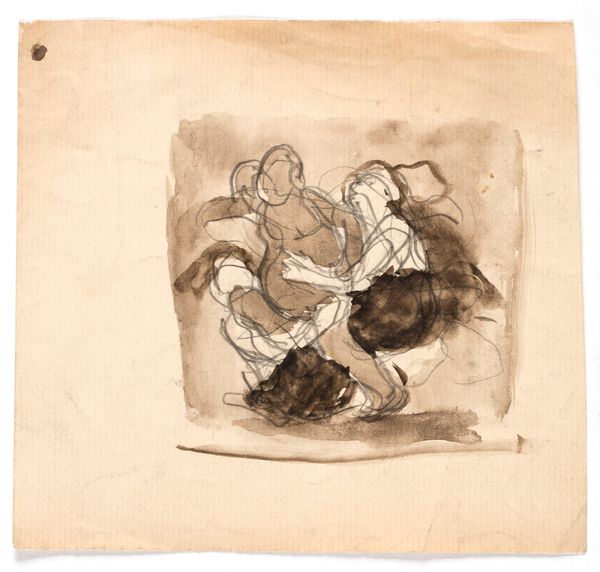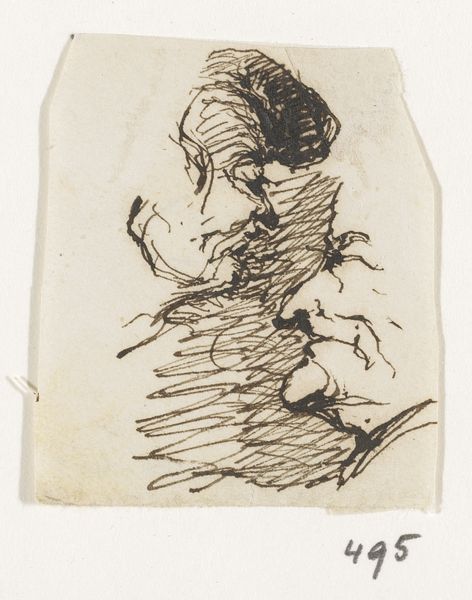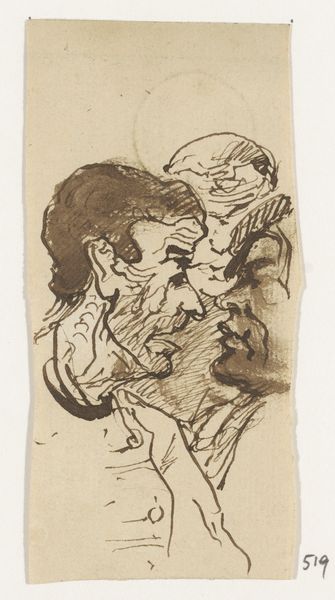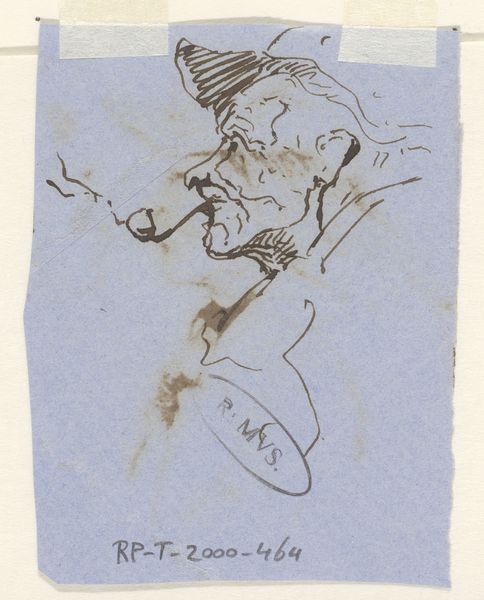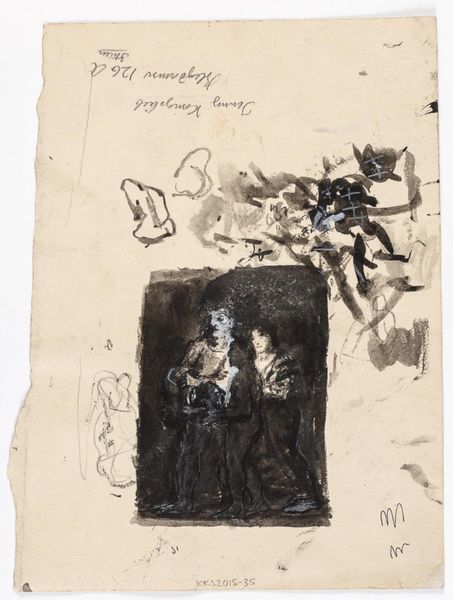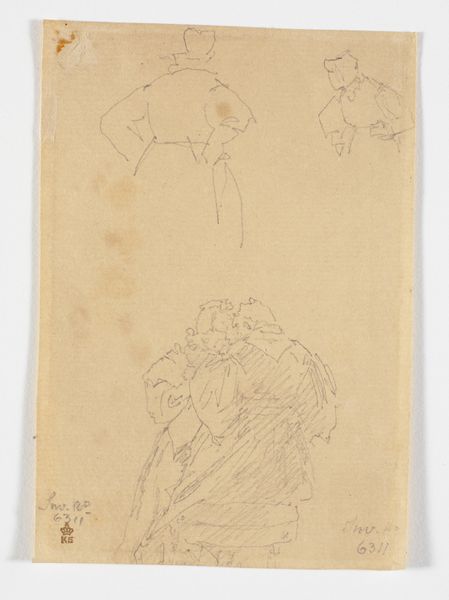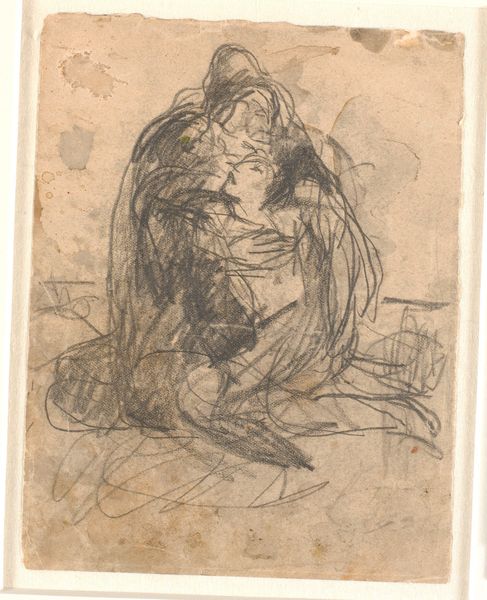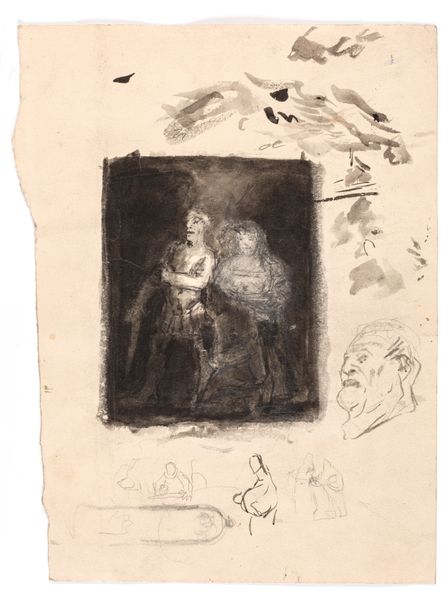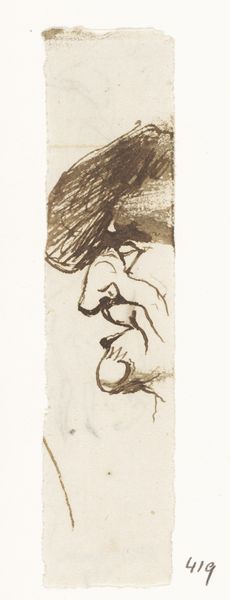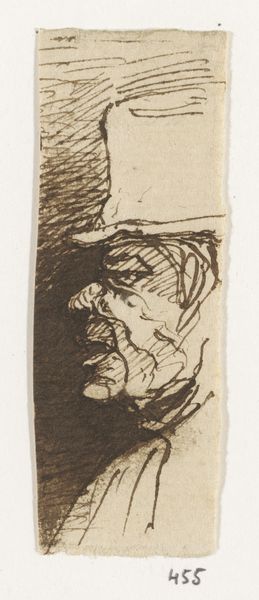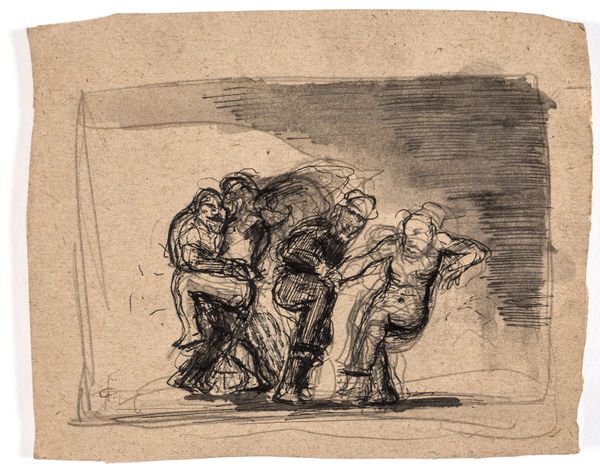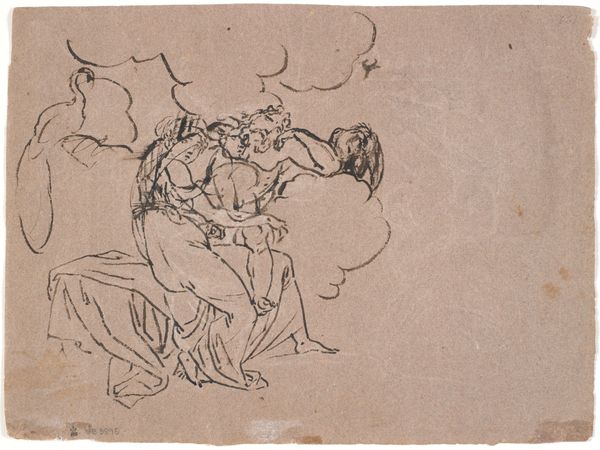
drawing, ink
#
drawing
#
narrative-art
#
figuration
#
ink
#
history-painting
#
modernism
Dimensions: 132 mm (height) x 102 mm (width) (bladmaal)
Curator: I'm immediately drawn to the raw energy captured in this image. It feels chaotic, visceral. Editor: Indeed. This is a study in ink on paper by Oluf Hartmann, entitled "Study for 'Two Women Fighting Over a Man'". He worked on it sometime between 1879 and 1910. It’s currently housed here at the SMK, Statens Museum for Kunst. What cultural context do you see bubbling up in this drawing? Curator: The very concept speaks to deeply rooted societal narratives. Consider the archetypes at play: the Madonna-whore complex, perhaps? Or the idea of female rivalry being inherently linked to male validation? The quick, almost frantic lines mirror the emotional frenzy. Editor: It certainly reflects the male gaze so common during that era. Think of the burgeoning patriarchal structures, industrialization, and the limited roles assigned to women in the late 19th century. Competition over a male partner, even rendered crudely here, highlights the power imbalances within that context. Curator: Precisely. It’s less about the literal figures and more about what they represent: suppressed desires, societal expectations, the precariousness of female identity. The sketchy nature even emphasizes how these are not fully formed identities, but rather outlines, shadows… Editor: I agree, these shadows act as reminders of a cultural milieu wherein a woman’s social standing hinged largely on her relationship to men. It also presents the darker implications of love, in which power and social leverage dictated individual interactions and relationships. I would even say that his study demonstrates how personal and political spheres were inseparable in 19th-century society. Curator: We are seeing more than a study here, but also an outline for exploring social power dynamics and internalized suppression—it remains a starkly potent exploration. Editor: Absolutely. Hartmann’s work leaves us considering how those ingrained structures continue to inform, often invisibly, present-day relationship politics and perceptions. It speaks across time.
Comments
No comments
Be the first to comment and join the conversation on the ultimate creative platform.
